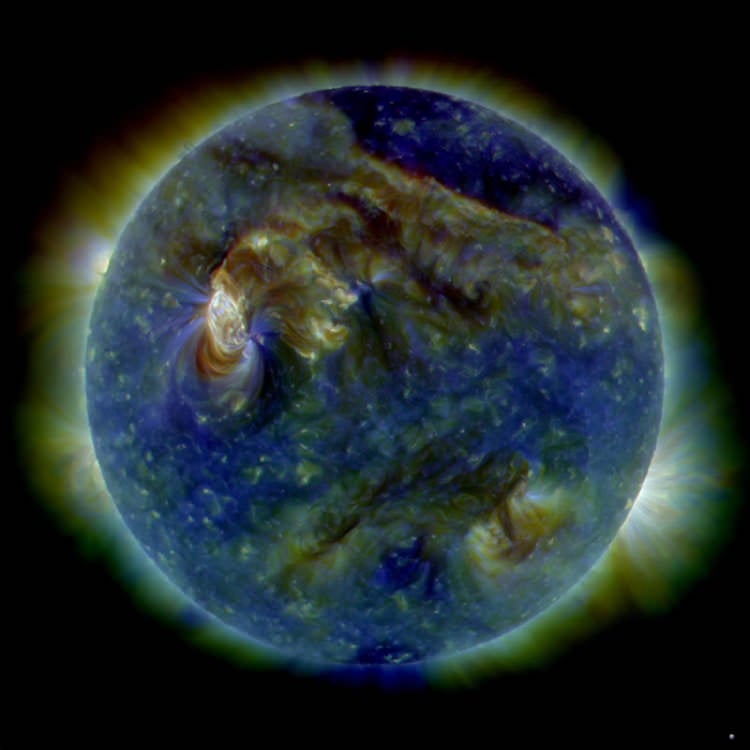[caption id="" align="alignnone" width="580" caption="Five sunspots appeared on the Sun on August 11, 2010. Image from SolarCycle24.com"][/caption]
Here's something we've not seen in a long while: five sunspots on the Sun at once. Is the Sun finally waking up from its unusually long and deep solar minimum slumber? While activity on the Sun usually ebbs and flows on a fairly predictable 11-year cycle, this current cycle has been anything but conventional. In 2009, there were 260 days (71% of the time) that the Sun was 'spotless,' but now in 2010 so far, the Sun has
had spots
been spotless for only 35 days. With the last solar maximum occurring in 2001, maybe the Sun is just now ramping up to the next maximum, which is set for 2013. Recent solar flares on August 1 and 7, and now these sunspots may be signaling that the Sun is "throwing off the covers" and starting to wake up.
This marvelous image from the Solar Dynamics Observatory shows that at about 8:55 UTC on August 1, a measurable solar flare triggered an event known as a coronal mass ejection (CME). This is where the "atmosphere" of the Sun sends out a burst of energized plasma. In this case, nearly the entire Earth-facing side of the Sun was involved.
The High Energy Astrophysics Picture of the week Page used that great "covers" analogy:
The Sun, after a long sleep, is finally waking up. And like any irascible sleeper vigorously throwing off the covers. In this case the covers are composed of high-energy electrons and protons being shot out into space at a tremendous rate. The image above, obtained by the Solar Dynamics Observatory on August 1, shows almost the entire earth-facing side of the sun erupting at once. In this extreme ultraviolet image you can see evidence of extremely ultraviolent activity: a C3-class solar flare (white area on upper left), a solar tsunami (upper right), multiple filaments of magnetism lifting off the stellar surface, large-scale shaking of the solar corona, and a coronal mass ejection. The coronal mass ejection, or CME, showered the earth with charged particles, producing spectacular aurora (northern lights) as far south as Iowa and Telemark, Norway.
And another CME on August 7 has not yet triggered a major geomagnetic storm, but high latitude sky watchers should take a look tonight, just in case.
Sources:
High Energy Astrophysics Picture of the Week,
SolarCycle24.com,
SpaceWeather.com
 Universe Today
Universe Today
